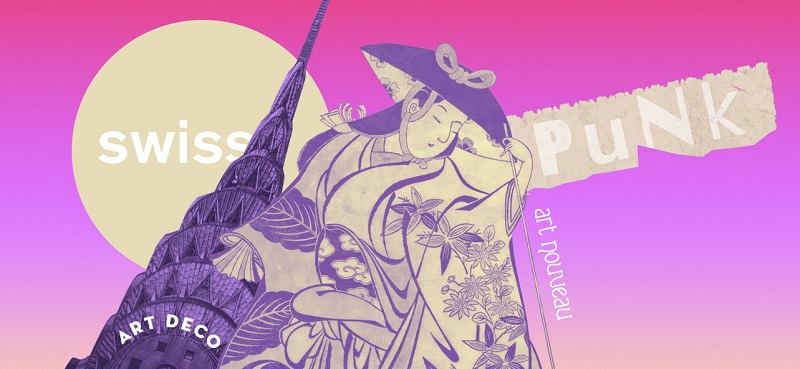



Graphic design is an ever expanding creative discipline. With our graphic design course, we teach you how to make research a fundamental part of your design process. You will develop diverse and well researched references for each brief you tackle, which in turn allows you to back up and argue for your design choices as they relate to the brief.
Read on to learn more about the history of graphic design styles, what their key features are and how you can use them to create an incredible portfolio.
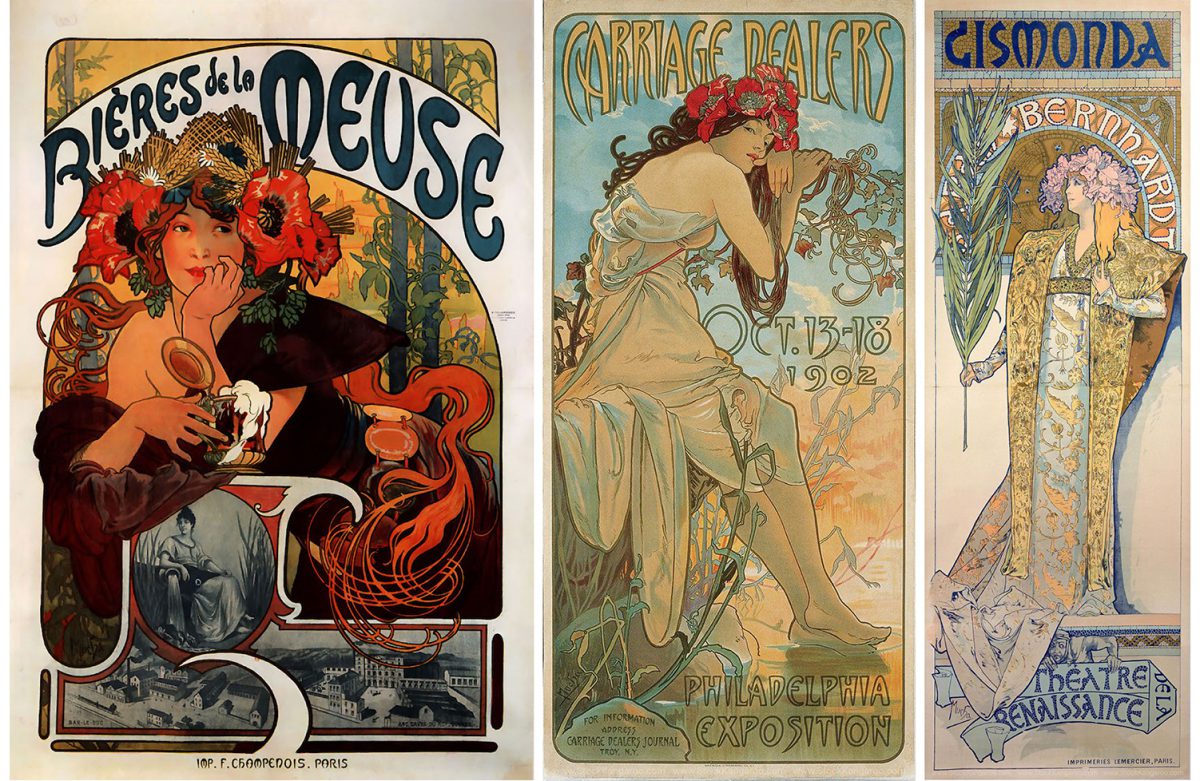
Art Nouveau is a style of architecture, decorative art and graphic design which rose to prominence in Western Europe and the USA during the late nineteenth century, continuing into the early twentieth century, reaching its peak by the 1920s.
The key characteristic features of this style are the bold outlines and flat yet intricately hand-illustrated designs and typefaces. The characters and forms depicted in this design style possess flowing curves which speak to the unique forms found in nature. The design style is whimsical, romantic and highly technical.
A perfect example of a well-known practitioner of this style is the Czeck-painter, illustrator and graphic artist Alphonse Mucha. His designs graced posters and advertisements of the era, yet his work has also consistently crossed into fine art with paintings and lavish object designs. Characteristic not only of Mucha’s work, Art Nouveau is known for the consistent use of the female form. Most Art Nouveau designs depict sumptuously dressed women, often crowned with flowers, poised amongst beautiful depictions of plants and nature.
Characteristics
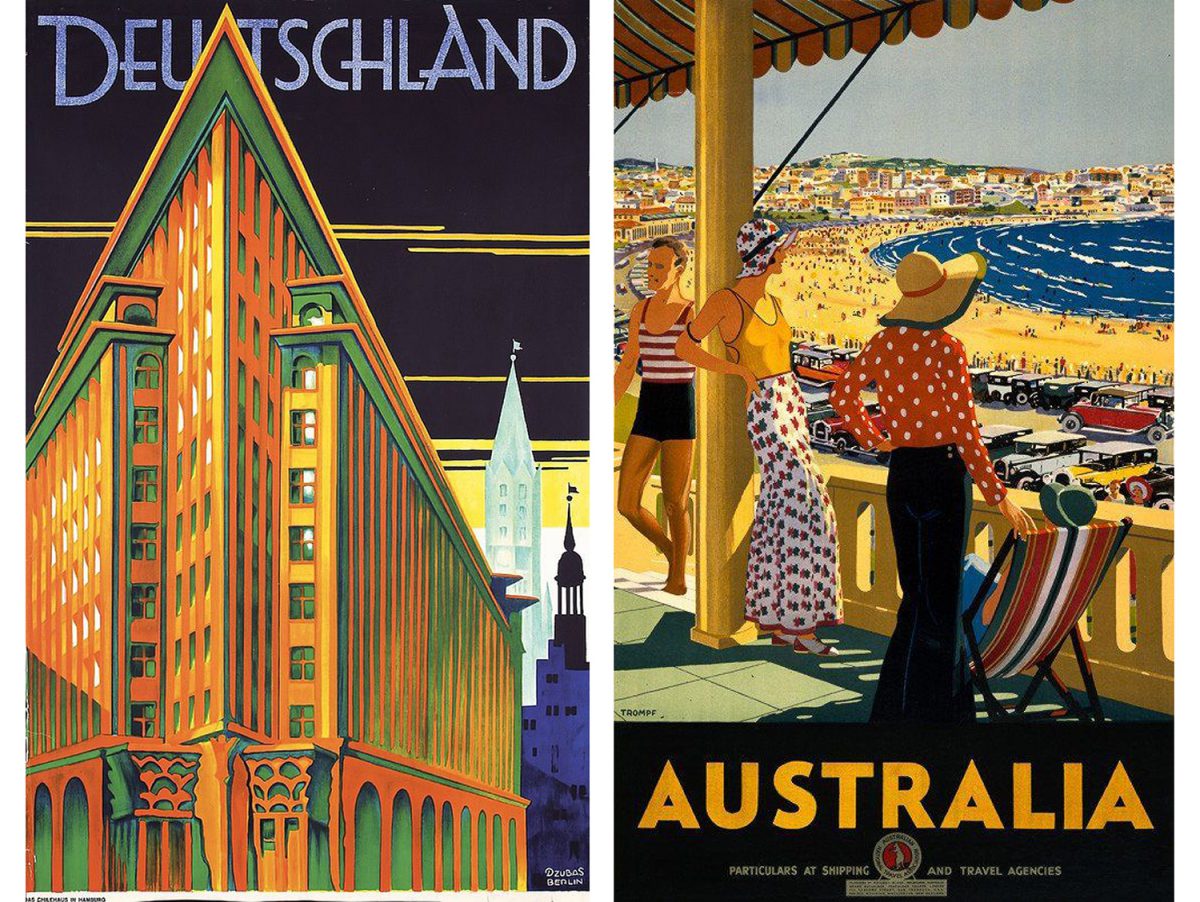
Art Deco is a form of design, visual arts and architecture which came to prominence as a symbol of luxury, wealth and sophistication in challenge to the austere influence of World War I. A diminutive of Arts Décoratifs, the name was taken from the 1925 Parisian exhibition titled ‘Exposition Internationale des Arts Decoratifs et Industriels Modernes’ which was the first to feature works of this style.
The characteristics synonymous with this graphic design style are bold curves, strong vertical lines, capitalised type, rich contrasting colours, aerodynamic forms, airbrushing, motion lines and the geometric treatment of patterns and surface.
Of its era, Art Deco became a popular style utilised for advertising. The style was at once progressive and expansive, yet never crossed the line into outrageous. It was enticing, familiar yet exciting. Art Deco style lent itself perfectly to the purpose of promoting luxury brands, fashion labels and far flung travel destinations.
Interestingly, you could google almost any location alongside the words art deco and find a classic tourism poster from this style. Try it and see what you find.
Characteristics
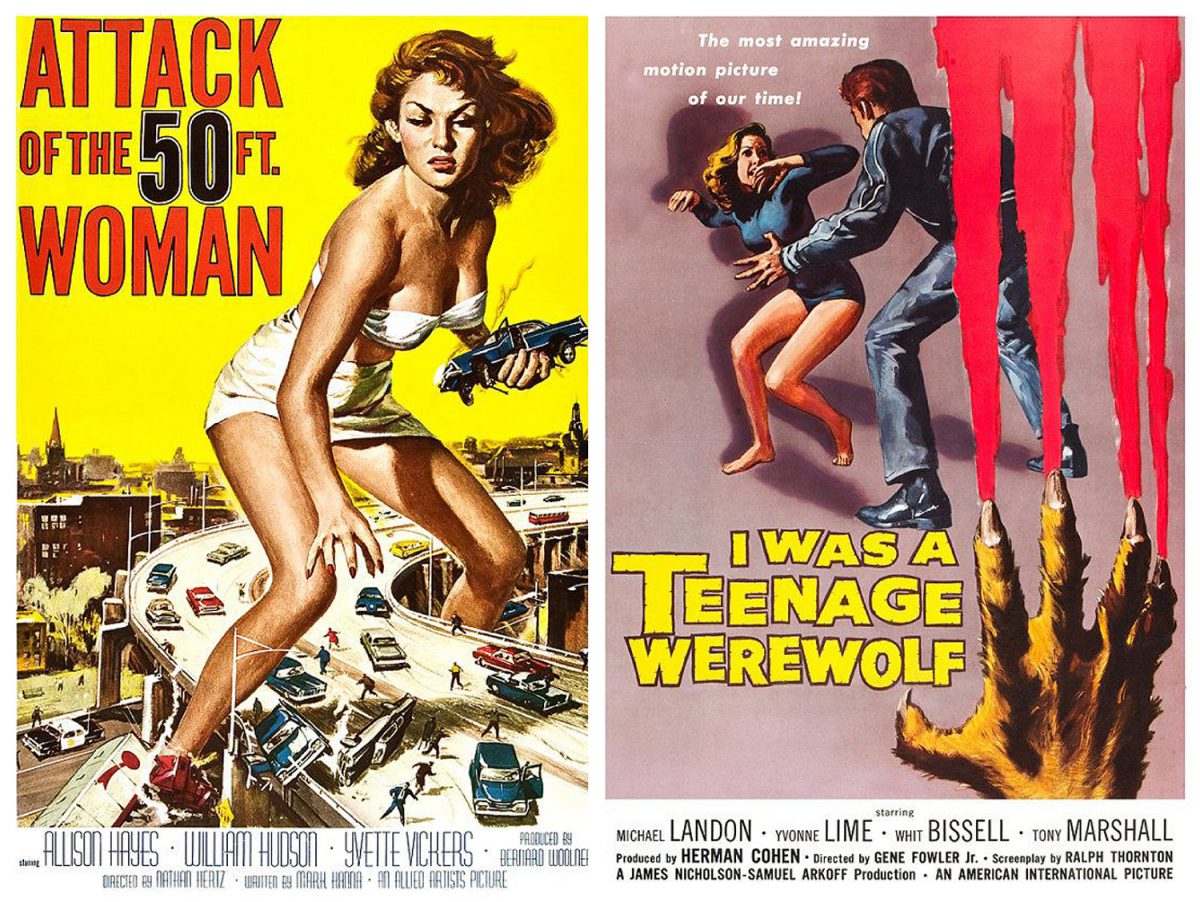
The influence of Art Deco lasted long after the 1930s, inspiring a proliferation of new design styles. One unique style which followed was American Kitsch. This design approach rose to prominence in the 1940s to 1960s in the USA, with an idealised, cartoon-like illustrative style. American kitsch designs of this era were known for their particular font styles and a futuristic stylisation with dramatised or caricatured imagery.
The graphic design style is synonymous with informal shapes, rich and high contrasting colour use, hand drawn and coloured illustrations, space-age forms and dramatic curves. We might observe a cross-pollination between American Kitsch design and the tone of voice in the advertising and signage of the day. Both employed the characteristic idealism of the American dream, peppered with caricatures. Film posters offer some of the best examples of American Kitsch style film, especially those of the science fiction or fantasy genres.
Characteristics
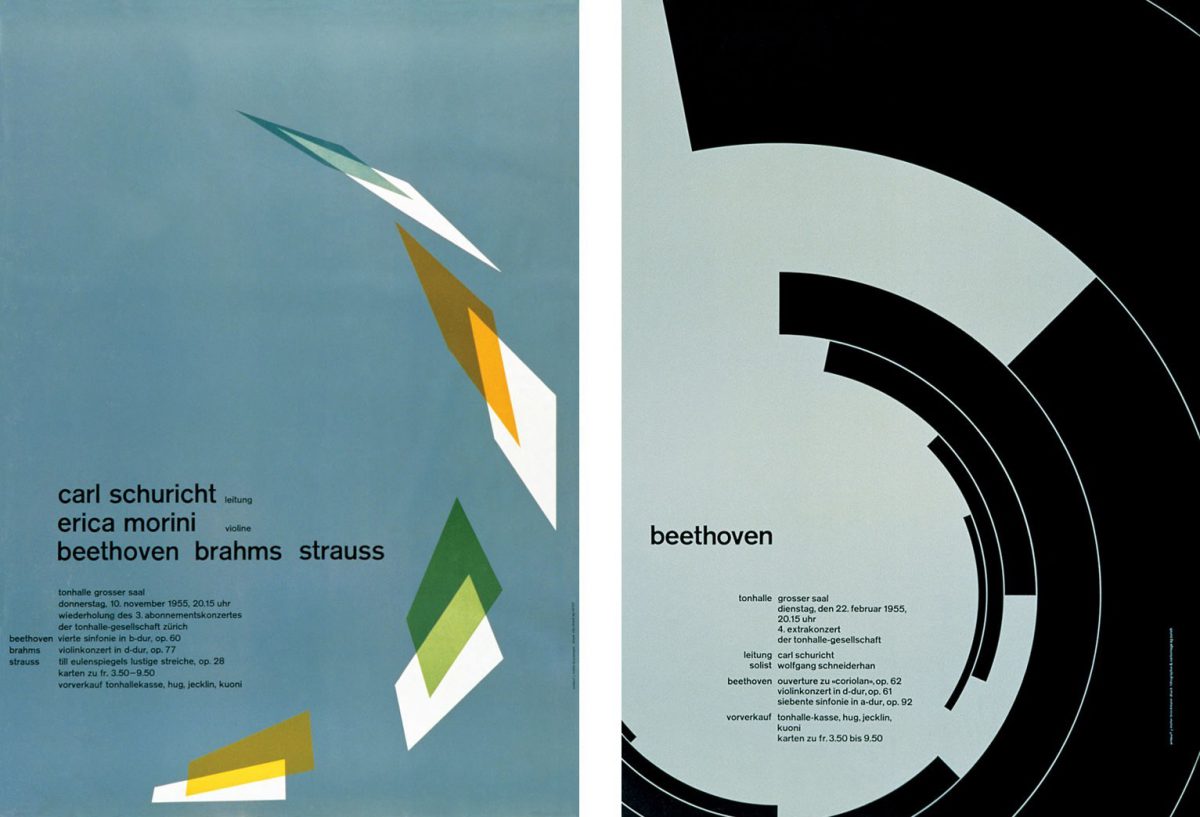
Originating in Switzerland in the 1940s, Swiss style design has concurrently been referred to as the International Typographic Style or the International Style. Hugely influential, this style of design was the foundation upon which the majority of design movements grew throughout the 20th century. Favouring objectivity, simplicity and legibility, this design style was initiated and led by the designers of the Zurich School of Arts and Krafts and the Basel School of Design.
Few other schools of design contributed as much to last century’s stylistic innovations. In particular the use of grids and asymmetrical layouts, alongside sans-serif typography were amongst the most prominent stylistic developments. The combination of typography and a general preference for photographic images are also noted as key characteristics, though colourful, geometric block illustrations were also common.
The style demanded a clean coherent design space, with a considerable amount of negative space given amongst elements.
As with Art Deco, poster design in particular became one of the most influential forms of the Swiss/ International design style.
Josef Müller-Brockmann is amongst the most celebrated graphic designers of the 20th Century. As a figurehead of the Swiss style, his designs offer a veritable cornucopia of references. Müller-Brockmann studied at the Zurich School of Arts, previously noted here as one of the key institutions from which this design style sprung. His work is praised for its simplified, gridded design approach and a preference for unornamented typefaces, such as the sans-serif Akzidenz-Grotesk typeface.
Characteristics
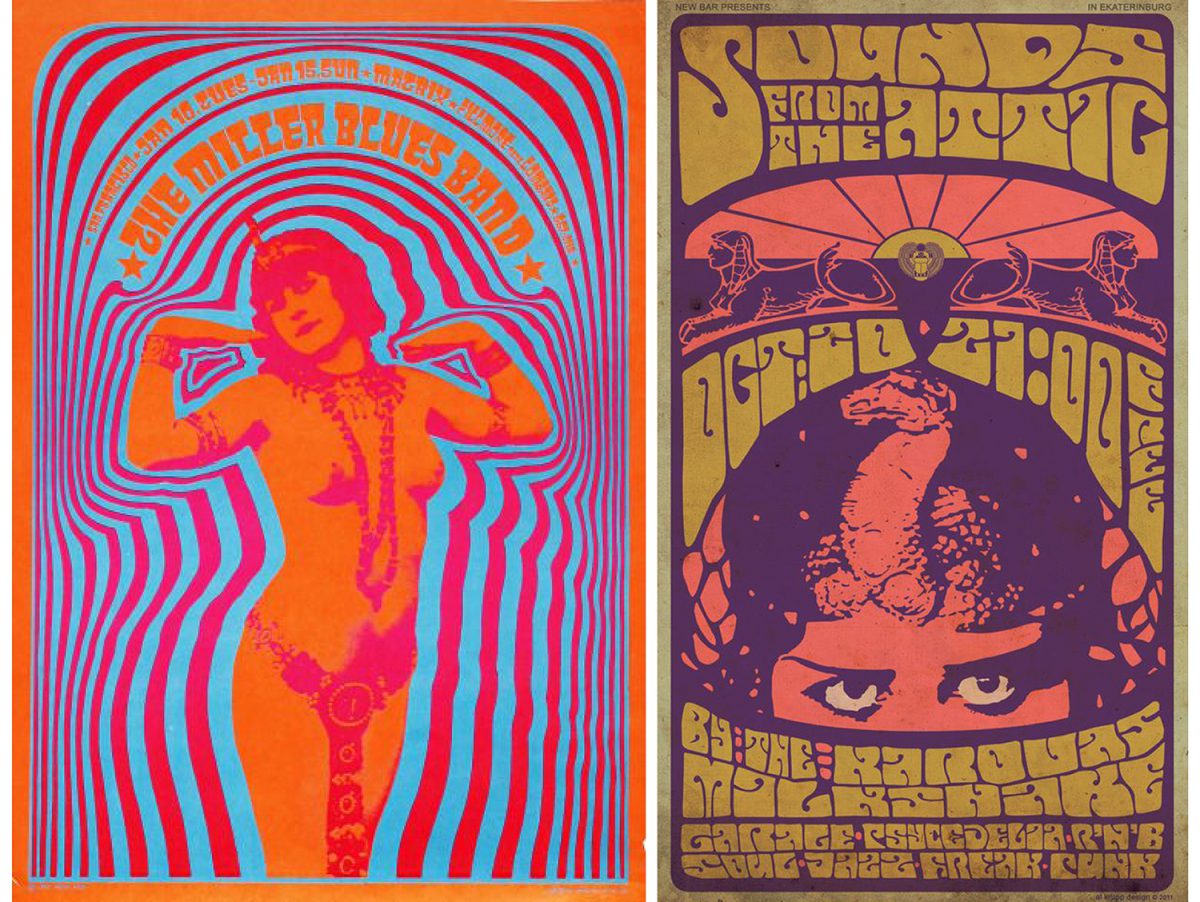
The phenomena of psychedelic design, art and music is synonymous with the 1960s and 1970s. It influenced and was influenced by the style of dress, philosophy, literature and culture of the time, while holding sway over the design culture throughout the decade. It still emerges as a recycled stylisation in design today.
In its epoch, psychedelic design sought to encapsulate and inhabit the mood of the era—a time of hallucinogenic drug trips, counter cultural exploration and innovation.
Band and concert posters of the 1960s to 1970s offer a vast reference library for this style. We see the use of bright and clashing colours, illegible hand-drawn curvaceous type, abstracted curvilinear shapes and metaphysical or surreal illustrative or photographic subject matter. The psychedelic design style harbours the influence of Art Nouveau designs, particularly in the hand-drawn type and consistent use of images depicting women or the female form.
Characteristics
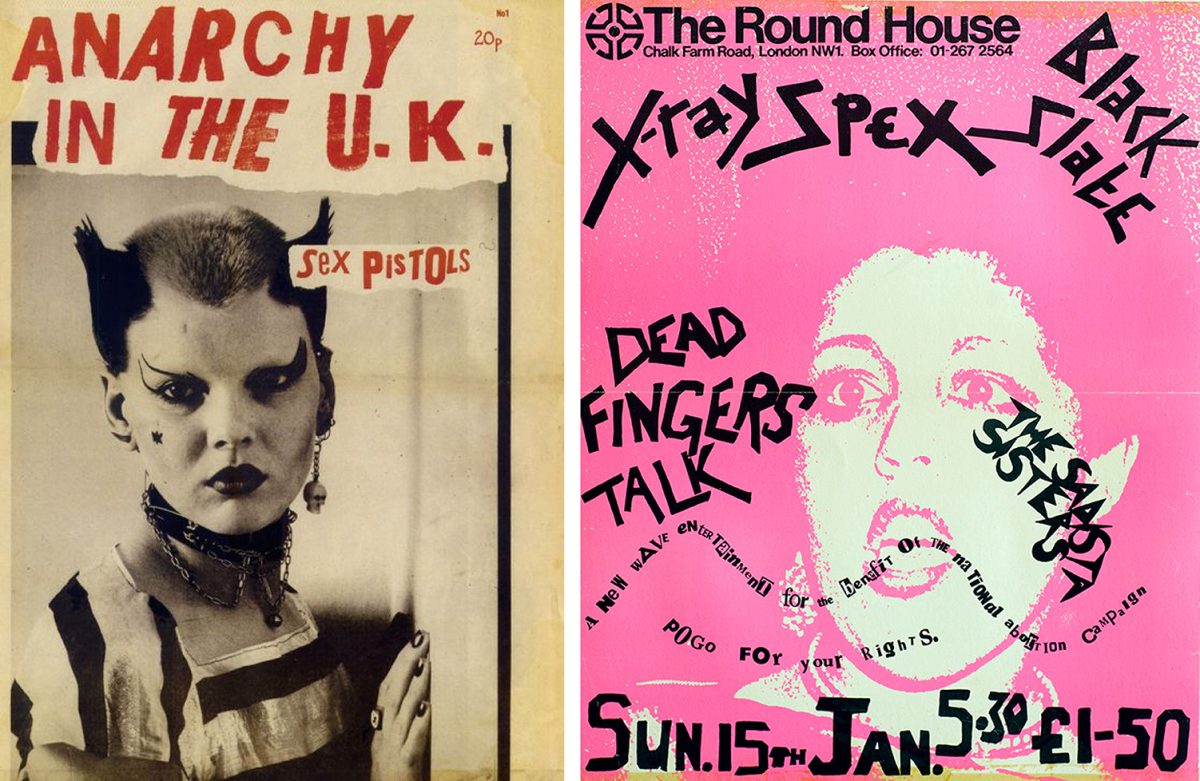
A strong ethos of DIY and anti-establishment attitude permeates all aspects of punk design. The rawness of this form of design came from the culture in which it originated in the late 1970s punk music movement. The design of the time spoke to the individual designers and artists creating these works. Most were entirely untrained as designers and usually were the band members or friends of the bands whose posters they made.
Their limited means—sometimes only scissors, found print media, a camera and a photocopier— heavily informed the way they designed.
Iconic elements of the punk design style are the DIY hand written or cut and paste typographic elements. Often designers collaged text using found and incongruous type elements—haphazardly intermingling bold serif and sans serif typefaces to achieve the classic punk style.
Punk design style lives on in contemporary zine culture, album cover designs and DIY poster design. These creative communities often operate from the position of having low to no budget. The cheap and readily available production mediums of screen printing and photocopying offer punk design a consistent aesthetic which is very easily emulated.
Characteristics
Ready to learn more? Study graphic design with Shillington, in London, New York, Sydney, Melbourne or Online, and you’ll learn to create designs in every style imaginable, alongside the design theory and the technical skills to complement it in three months full-time or nine months part-time.